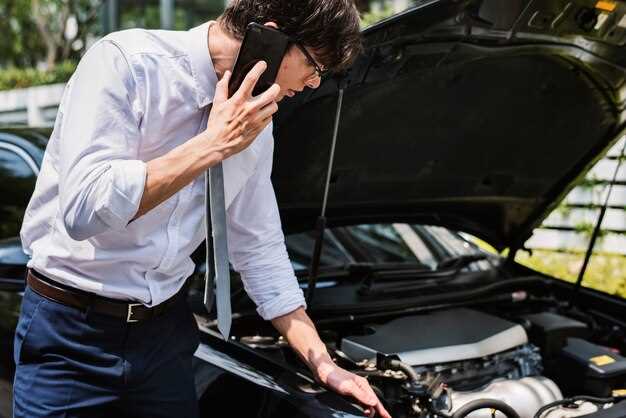
Oil leaks in foreign cars can lead to significant performance issues and costly repairs if not addressed promptly. Understanding the common causes of these leaks is essential for car owners who wish to maintain their vehicles in optimal condition. Various factors contribute to oil leaks, ranging from aging components to improper maintenance practices.
One of the primary causes of oil leaks is the deterioration of gaskets and seals. Over time, exposure to heat and pressure can cause these components to wear out, leading to leaks. Valve cover gaskets and oil pan gaskets are particularly susceptible to this kind of wear. Additionally, foreign cars often feature unique designs and materials that may experience failures more rapidly than those found in domestic vehicles.
Another frequent culprit of oil leaks is loose or damaged oil filters and drain plugs. In foreign cars, the specifications for oil filter installation can vary significantly, making it crucial to follow manufacturer guidelines. A poorly fitted filter can expose the engine to leaks, leading to more severe damage if not corrected. Moreover, improper torque on drain plugs after an oil change can also result in oil seeping out, highlighting the importance of skilled maintenance.
Lastly, a buildup of sludge or contaminants in the engine can compromise the integrity of internal components, causing leaks. Regular oil changes and using high-quality oil are vital to preventing this issue. By being aware of these common causes, foreign car owners can take proactive steps to address potential leaks before they escalate into more serious problems.
Identifying Gasket Failures in Popular Foreign Brands

Gasket failures are a common issue in many foreign car brands, often leading to oil leaks. Identifying these failures involves understanding the signs and symptoms specific to each manufacturer.
In Japanese brands like Toyota and Honda, gaskets can degrade from heat and exposure to engine fluids. Look for oil stains under the engine, especially around the valve cover and oil-pan areas. A distinctive smell of burning oil can also signal gasket wear, as oil leaks onto hot engine components.
German vehicles, such as BMW and Audi, often face gasket issues due to the use of higher-performance seals that may wear out faster. Owners should monitor coolant and oil levels regularly, as a drop in either fluid might indicate a gasket failure. Additionally, a rough idle or decreased engine performance suggests possible leaks in the intake manifold gasket.
For brands like Volkswagen, it is crucial to observe the timing chain cover and cylinder head gasket regions. If the vehicle exhibits excessive exhaust smoke or a sweet smell from the exhaust, it could signify a blown head gasket, which can lead to severe engine damage if not addressed promptly.
Luxury brands like Mercedes-Benz tend to use advanced gaskets, but these components can still fail after prolonged use. Regular visual inspections of the engine bay for oil accumulation are vital. If the engine runs hot, that might indicate a failing gasket, leading to reduced performance and potential overheating.
Regular maintenance and paying attention to early warning signs can significantly mitigate gasket-related oil leaks in foreign cars. Detecting these failures early helps avoid expensive repairs and ensures the longevity of the vehicle.
Understanding Oil Pressure Issues and Their Impact on Leaks
Oil pressure issues in vehicles can lead to significant complications, including oil leaks. Maintaining adequate oil pressure is essential for the efficient operation of an engine, and any imbalance can result in various problems, including leaks.
Insufficient oil pressure can stem from several factors such as low oil levels, a failing oil pump, or worn engine bearings. When the pressure drops, oil cannot circulate effectively, leading to inadequate lubrication of engine components. This situation can cause overheating and increased friction, which may create small cracks or gaps within the engine casing or gaskets, ultimately causing oil to leak.
Conversely, excessively high oil pressure can also result in leaks. When pressure is too high, it can force oil past seals and gaskets that are not designed to withstand such force. This can lead to significant leaks, particularly in older vehicles or those with aging components. Additionally, a malfunctioning pressure regulator can exacerbate this issue, as it fails to maintain the appropriate pressure levels.
Regular maintenance and timely inspections are crucial for detecting oil pressure issues early. Checking oil levels, replacing old oil, and monitoring the condition of the oil pump and pressure regulator can mitigate the risk of oil leaks. Drivers should pay attention to warning signs such as dashboard indicators, unusual noises, or oil spots under the vehicle, as these may indicate underlying oil pressure problems that need immediate attention.
Understanding the relationship between oil pressure and leaks is essential for any vehicle owner. Proactive measures and timely repairs can prevent the costly consequences associated with oil leaks, ensuring that the engine runs smoothly and efficiently.
Examining the Role of Engine Wear and Tear in Oil Leaks

Engine wear and tear is a significant factor contributing to oil leaks in foreign cars. Over time, the continuous operation of an engine leads to the degradation of various components, which can result in oil becoming displaced or escaping from its intended pathways.
Piston Rings: One of the primary areas affected by wear is the piston rings. These rings create a seal between the piston and cylinder wall. As they wear down, they become less effective at maintaining proper compression and can allow oil to seep into the combustion chamber, leading to visible leaks and excessive oil consumption.
Gaskets and Seals: Gaskets and seals are vital for preventing leaks at junctions where components meet. Aging and wear can cause these materials to become brittle or cracked. For instance, the valve cover gasket is prone to deterioration, which can lead to oil pooling on the engine surface. Regular checks can help catch these issues before they escalate into larger problems.
Oil Pan: The oil pan is another critical area susceptible to wear. Over time, the oil pan can develop cracks or damage from road debris, which can result in significant oil leaks. If the oil pan is rusted or corroded, it may not create a secure seal against the engine block, further exacerbating oil loss.
Wear Factors: Several factors can accelerate engine wear, including poor maintenance, inadequate lubrication, and prolonged exposure to harsh driving conditions. Regular oil changes and the use of high-quality lubricants can mitigate some of the adverse effects of wear and extend the longevity of engine components.
In conclusion, the relationship between engine wear and oil leaks is critical to understanding the health of a vehicle. Drivers of foreign cars should remain vigilant about maintenance and address wear issues promptly to avoid costly repairs and ensure optimal engine performance.




